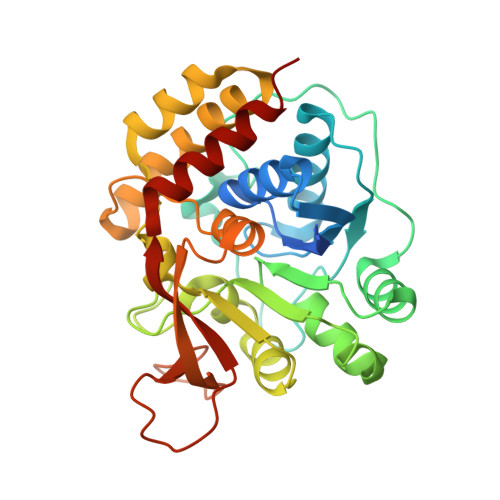Structural basis for substrate specificity in group I nucleoside hydrolases
Iovane, E., Giabbai, B., Muzzolini, L., Matafora, V., Fornili, A., Minici, C., Giannese, F., Degano, M.(2008) Biochemistry 47: 4418-4426
- PubMed: 18361502
- DOI: https://doi.org/10.1021/bi702448s
- Primary Citation of Related Structures:
3B9X - PubMed Abstract:
Enzymes with nucleoside hydrolase activity (NHs) belonging to homology group I either are markedly specific for pyrimidine nucleoside substrates or hydrolyze with comparable efficiencies the N-glycosidic bond in all common nucleosides. The biochemical and structural basis for these differences in substrate specificity is still unknown. Here we characterize the binding interactions between the slowly hydrolyzed substrate inosine and the Escherichia coli pyrimidine-specific NH YeiK using cryotrapping and X-ray crystallography. Guided by the structural features of the Michaelis complex, we show the synergic effect of two specific point mutations in YeiK that increase the catalytic efficiency toward purine nucleosides to values comparable to those of natural nonspecific NHs. We demonstrate that the integrity of an active-site catalytic triad comprised of two hydroxylated amino acids and one histidine residue is a requirement for the highly efficient hydrolysis of inosine by group I NHs. Instead, cleavage of the YeiK-preferred substrate uridine is not affected by mutations at the same locations, suggesting a different fine chemical mechanism for the hydrolysis of the two nucleoside substrates. Our study provides for the first time direct evidence that distinct subsets of amino acid residues are involved in the hydrolysis of purine or pyrimidine nucleosides in group I NHs.
Organizational Affiliation:
Biocrystallography Unit, DIBIT San Raffaele Scientific Institute, via Olgettina 58, 20132 Milan, Italy.

















